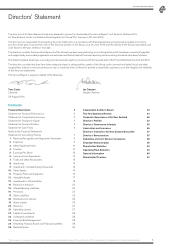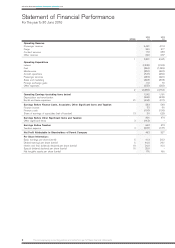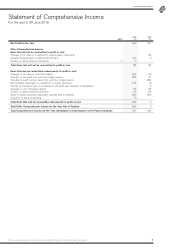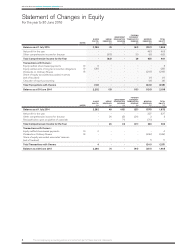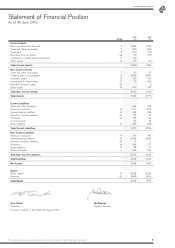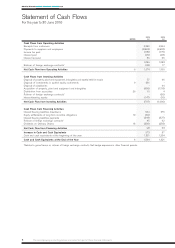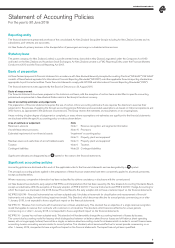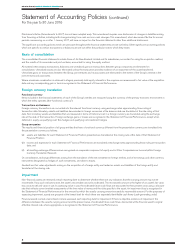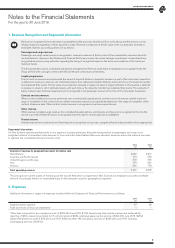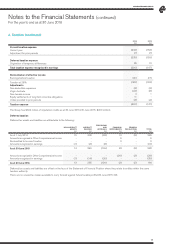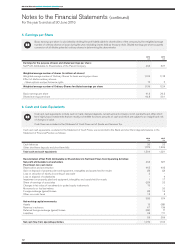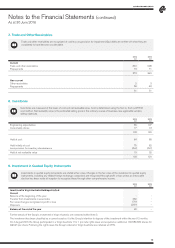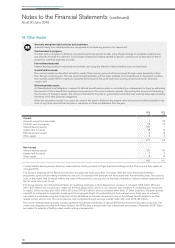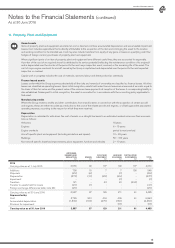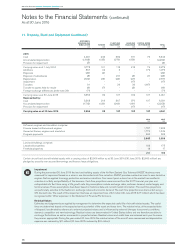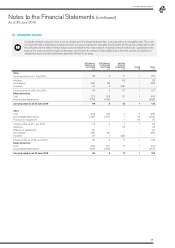Air New Zealand 2016 Annual Report Download - page 12
Download and view the complete annual report
Please find page 12 of the 2016 Air New Zealand annual report below. You can navigate through the pages in the report by either clicking on the pages listed below, or by using the keyword search tool below to find specific information within the annual report.
AIR NEW ZEAL AND ANNUAL FINANCIAL RESULTS 2016
Notes to the Financial Statements (continued)
For the year to 30 June 2016
10
AIR NEW ZEAL AND ANNUAL FINANCIAL RESULTS 2016
3. Other Significant Items
Other significant items are items of revenue or expenditure which due to their size and nature warrant separate disclosure to assist
with the understanding of the financial performance of the Group.
Upon loss of significant influence over an associated company, the Group measures the retained interest at fair value. At the
date of cessation of equity accounting, the difference between the carrying amount of the equity accounted investment and the
fair value of the investment, together with amounts previously recognised in equity reserves are recognised as a gain or loss on
cessation of equity accounting in the Statement of Financial Performance.
2016
$M
2015
$M
Virgin Australia partial divestment:
- Fair value movement on sold interest (including disposal costs)
- Fair value movement on 2.5% retained interest
- Loss on cessation of equity accounting of associate
(63)
(21)
(2)
-
-
-
Settlement of legal claim (including associated legal costs)
(86)
(57)
-
-
(143) -
With effect from 30 March 2016, the Company announced that it was exploring options with respect to its shareholding in Virgin Australia,
including a possible sale, and the Group’s representative on the Virgin Australia Board of Directors resigned. The Group no longer had the
ability to exercise significant influence over Virgin Australia due to the change in composition of other shareholdings, lack of representation
on the Board and as a result of the commencement of a sales process, and ceased to apply the equity method of accounting to the
investment from that date. From 30 March 2016 the investment was classified as an Investment in quoted equity instruments and was stated
at fair value with changes in fair value being recognised through profit or loss. In June 2016, the Company sold the majority of its shareholding
(of 810,613,877 shares for A$0.33 per share) with a residual interest of 2.5% (or 102,889,331 shares valued at A$0.205) being held at
30 June 2016 (refer Note 9).
On 7 May 2016 the Group agreed to settle a class action compensation claim in the United States made in respect of allegations of
anti-competitive conduct against many airlines for pricing in the air cargo business. Air New Zealand does not admit to being part of the
alleged conspiracy. The settlement was reached due to the deemed unacceptable risk on the Group’s financial position arising from the
calculation of potential damages awarded under the United States class action system which trebles damages for anti-competitive liabilities.
The negotiated settlement amount was for US$35 million. In 2011 the Group successfully defended its position with the United States
Department of Justice and was released from the criminal investigation with no prosecutions having been commenced.
4. Taxation
Current and deferred taxation are calculated on the basis of tax rates enacted or substantively enacted at reporting date, and are
recognised in the income statement except when the tax relates to items charged or credited to other comprehensive income, in
which case the tax is also recognised in other comprehensive income.
Deferred income taxation is recognised in respect of temporary differences arising between the tax bases of assets and liabilities
and their carrying amounts in the financial statements.
Deferred income tax assets and unused tax losses are only recognised to the extent that it is probable that future taxable amounts
will be available against which to utilise those temporary differences and losses.
Judgements are required about the application of income tax legislation. These judgements and assumptions are subject to risk
and uncertainty, hence there is a possibility that changes in circumstances will alter expectations, which may impact the amount of
current and deferred tax assets and liabilities recognised in the Statement of Financial Position and the amount of other tax losses
and temporary differences not yet recognised. In such circumstances, some or all of the carrying amounts of recognised tax assets
and liabilities may require adjustment, resulting in a corresponding credit or charge to the Statement of Financial Performance.



